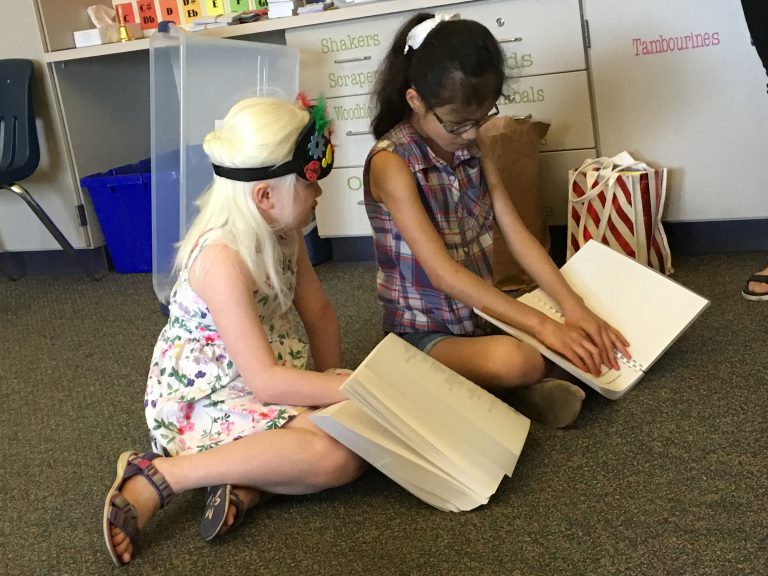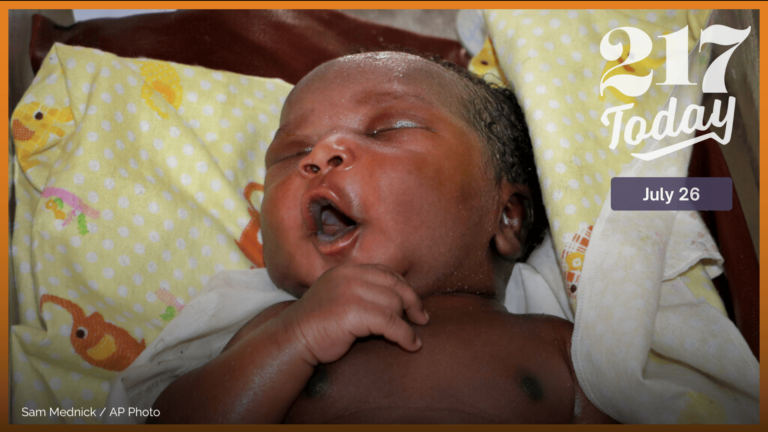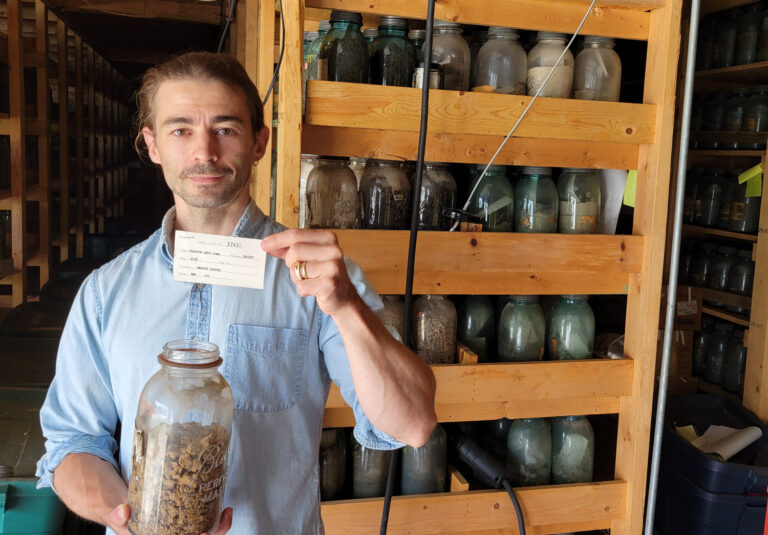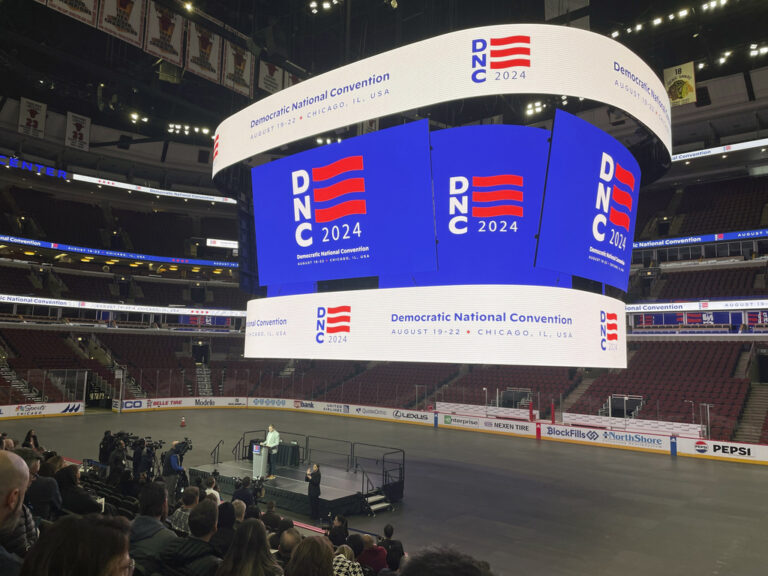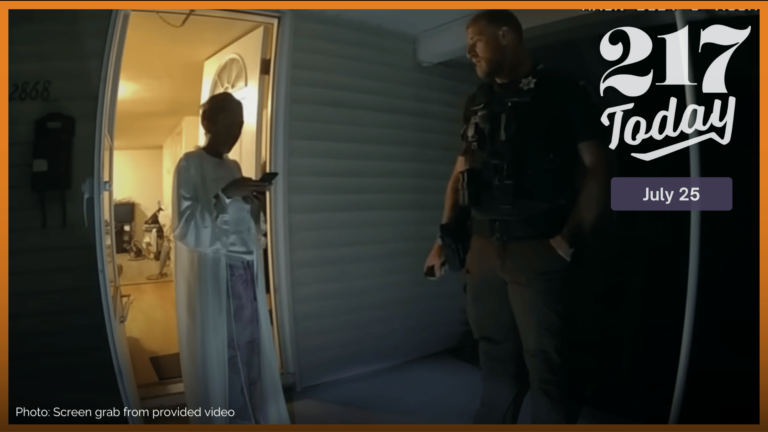Amber McKeag says her son Darrin received little braille instruction before the COVID-19 pandemic hit Illinois. Now, she says, he doesn’t receive any.
McKeag and her family live in a rural part of Mercer County, on the Iowa-Illinois border. Her son, Darrin, who is about to turn 10, suffers from Bardet-Biedl syndrome. As a result, his vision is deteriorating at a steady pace. While Darrin is currently in the fourth grade — well beyond the age at which most sighted children learn to read and write — he doesn’t know how to read braille.
McKeag says that’s because her son hasn’t received the level of braille instruction he needs.
Many educators in Illinois expect students to be a little behind when in-person classes eventually resume. But advocates and parents of visually impaired students fear they’ll be worse off than their sighted peers, largely because many of those students received minimal braille instruction even before the coronavirus pandemic began.
While in public school, McKeag says Darrin received about 45 minutes to an hour per week of instruction from a traveling teacher for visually impaired and blind students. She recently moved him to a small private school where she hoped he would get more individualized attention. But last fall, Darrin’s braille teacher and mobility specialist went on medical leave.
“They had no sub, they had no replacement. There was nothing. So he had no Braille instruction at all at the beginning of this year,” McKeag says.
His teacher returned earlier this year, but then COVID-19 hit. Schools closed, stay-at-home orders were imposed and now Darrin still isn’t receiving braille instruction.
Carlton Cook Walker says she hears many stories like this from parents of visually impaired and blind children. Cook Walker, president of the National Organization of Parents of Blind Children, says the pandemic has compounded an existing issue for families across the country: if schools already weren’t providing the services blind students need, then remote learning proves especially challenging.
In some cases, she’s heard that families also don’t have the assistive technology necessary to keep their students learning from home.
“Blind students need different equipment, a pencil and paper is not necessarily going to cut it,” she says. Cook Walker says many students need braillers — which are essentially typewriters that produce braille — computers with refreshable braille displays, hardcopy braille worksheets and screen reading software.
In an ideal situation, Cook Walker says all of these things should have been in the child’s home before schools closed.
“So unfortunately (COVID-19) brings to light gaps in education that do still need to be filled,” she says.
McKeag, Darrin’s mother, says she felt alone in her struggle to get her son the services he needs. But then she began speaking with parents of other blind children across Illinois. She says she realized he wasn’t the only one lacking braille instruction.
“Having the ability to talk to other parents of blind students and realizing we aren’t alone is kind of nice,” McKeag says. “However, it’s also throwing up that red flag that this is an issue across the state. Speaking with some of (Darrin’s) doctors and those that are professionals in the (braille) industry — students need one to two hours a day in braille instruction. And not many are getting that.”
The American Printing House for the Blind reported that in 2016 there were roughly 63,000 blind students nationwide, and less than 10 percent used braille as their primary reading medium. A spokesperson for the National Federation of the Blind says the organization’s position is that “most blind and low-vision students should be taught braille, at least so that it is a tool that is available to them even if they can also use print to some extent.”
Cook Walker says many blind students are “lucky to get an hour a day of braille instruction. Many only get maybe half an hour a week.”

Ethan Edwards, 17, is one of the lucky students. Edwards is a junior at University High School on the Illinois State University campus in Normal, and he’s almost completely blind. He says he started receiving daily braille instruction when he was three years old. Edwards also trained himself to listen to audio at astonishing speeds — 700 words per minute. He says he likes to get information via audio sources and relies heavily on screen reading software. But he also says braille is a crucial tool for him; it’s how he reads and completes his math assignments.
He says learning how to read braille is an important step toward independence for blind students.
“When these kids get out of high school or whatever, and they go to college, I mean, they’re not going to have somebody that’s able to read and write their work for them. They’re going to be on their own, and that’s not preparing them for success down the road,” Edwards says.
Kristin Shumann is a traveling teacher for visually impaired and blind students in the northwestern part of Illinois. She’s also Darrin’s teacher. Shumann says the reason why so few students receive the necessary amount of instruction is because of a severe shortage of teachers for the blind and visually impaired.
“I’ve had this job for three years. The one I had before this I had for 10 years. And when I left there, they did not find a replacement for me, and as far as I know, they still do not have a teacher,” Shumann says.
Shumann is one of 236 teachers for visually impaired students in Illinois, according to the Illinois State Board of Education. That number includes both traveling teachers — called vision itinerants — and teachers who work as special educators within school districts.
Shumann says the services teachers like her provide is vital.
“I can make the difference between a taxpaying citizen and a burden to society. And if they don’t have that instruction, then chances are it’s going to be difficult for them to get a job. I mean, the more literate they are, the greater their chances are becoming a taxpaying citizen. So it bothers me when kids are going without services,” she says.
Shumann isn’t seeing students at the moment due to the pandemic. She says she’s less concerned about regression among her students because of COVID-19 and more concerned about the lack of instruction they receive even in the best of times.
Cook Walker, with the National Organization for Parents of Blind Children, says she sees an opportunity amidst the pandemic for a reset — both for parents and schools.
“This environment in which we live, provides us a jolt, I think, that may help us feel empowered and desirous of moving forward in a new direction,” she says.
Cook Walker says her organization is helping parents get technological resources for their kids. For families of students like Darrin who aren’t reading braille yet, she hopes this is a time where they can put together an action plan, so that when in-person instruction does resume, they can advocate for what they need.
McKeag says she’s spending quarantine focusing on life skills she wants Darrin to learn. He loves to garden, and they spend a lot of time outside. Darrin has also sold his produce at a local farmers market, and he collects cans for money, which he uses to buy more seeds.
“Whether we’re planting seeds or buying soil or whatever, we turn it into a learning lesson. So though I can’t teach him braille, which is unfortunate, I can teach him other things that he won’t learn at school. So when we do go back to school, he can focus on the braille a little bit more.”
Follow Lee Gaines on Twitter: @LeeVGaines

